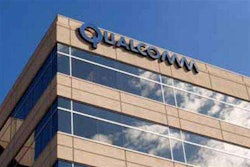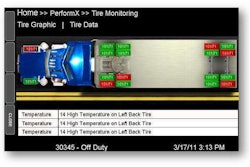Facilitating cargo movement while generating less pollution, the Port of Los Angeles says it continues to make green growth a reality. According to the port, data released this week shows that it has cut emissions from cargo-handling operations significantly between 2005 and 2010, including a 69 percent reduction in diesel particulate matter even as cargo volumes rose by 5 percent during the same period.
“The air quality in the L.A. harbor is improving as a result of the substantial investments by the port, its tenants and other port-related businesses have made in recent years by purchasing cleaner equipment and participating in a variety of emissions-reduction initiatives,” said Geraldine Knatz, port executive director. “Despite the challenging economy these past several years, our port and local industry have worked hard to continue lowering emissions, and the five-year report card shows that our collective efforts are paying off.”
The port says on a per-unit-of-cargo basis, its 2010 inventory of air emissions shows sulfur oxide emissions per 10,000 TEUs have fallen 76 percent, and PM emissions and related pollutants (PM10 and PM2.5) have dropped 71 percent since the first inventory in 2005. Nitrogen oxide emissions have fallen 52 percent, carbon monoxide 48 percent and hydrocarbon emissions 45 percent since the baseline year.
Reducing emissions on a per-unit-of-cargo basis is a key objective of the Clean Air Action Plan. When it adopted the CAAP in 2006, the port pledged not only to reduce overall emissions but to make sure that each ton of cargo would be moved with fewer emissions in coming years.
On a year-to-year basis, air emissions associated with cargo handling operations at the port shows PM emissions down by 39 percent from 2009, NOx emissions down by 25 percent and SOx emissions down by 45 percent; other pollutants showed similar declines compared to 2009. The decrease comes despite a 16 percent increase in the amount of cargo handled at the port compared to 2009.
When linked to a fixed amount of cargo, PM emissions per 10,000 TEUs of cargo handled dropped 47 percent in one year from 1,320 pounds in 2009 to 700 pounds in 2010, SOx emissions dropped by 53 percent, and PM10 and PM 2.5 dropped by 47 percent. The other pollutants in the inventory dropped almost as much: NOx by 36 percent, carbon monoxide by 35 percent and hydrocarbons by 30 percent.
The emissions inventory uses actual records of activity by ships, trucks, trains, cranes and other yard equipment; data on the types and ages of the equipment; and up-to-date information on emissions factors for the various engines to calculate the actual amount of emissions produced by port activities over the year. The technique was developed in cooperation with the South Coast AQMD and the California Air Resources Board to ensure accuracy and consistency with the inventory techniques used by those agencies in other applications.
“This is the second straight year we have achieved dramatic reductions in every emissions category,” says Knatz, who cited the state’s clean fuel requirements for vessels, the San Pedro Bay Vessel Speed Reduction program and the reduction in truck emissions resulting from the Clean Truck Program as key factors in the decline.
Additionally, emissions reductions have resulted from the millions of dollars the port has spent retrofitting cargo handling equipment and harbor craft engines with pollution control devices, and using alternative fuels and power systems. New state air quality regulations also have helped slash emissions from the big diesel engines that power the movement of cargo at the port.













